Greek Architecture, often referred to as Classical Architecture, remains influential among Architects worldwide. Its distinctive style continues to inspire professionals, who seek to replicate its design and unique features even in modern times.
Their design approach reflects a deep-seated aesthetic belief in building, and the Architectural masterpiece can be traced back to the Greek-speaking Hellenic civilization. Renowned for their mastery in construction, they upheld core principles centered on simplicity, proportion, perspective, and harmony.
Greek Architecture Timeline
When referring to Greek Architecture, we inherently cover the Ancient Greek Architectural marvels, an early stage of construction circa 900 BC, extending through the corridors of time until the 1st Century AD. The ever-lasting legacy of this Architectural history also unfolds in fragments dating back to as early as 600 BC, revealing the design mastery that has withstood the test of millennia.
Locations
The glory of Greek Civilization extended across the Greek mainland, the Peloponnese, the charming islands of the Aegean Sea, the Greek Colonies in Ionia, Magna Graecia, as well as Anatolia, Italy, and Sicily.
You can use the link to look at the map more closely if you want to learn more about it.
Planning & Design
The Ancient Greeks built many different kinds of buildings, from homes to big public places like theaters and markets. But what they’re most famous for are their temples for their gods. Greek temples were special because of their unique style, like having columns, slanted roofs, and porches. To understand Greek Architecture better, let’s look at some common things in these Ancient structures. These involve a preference for Rectangular, Circular, and Semi-Circular layouts, often characterized by symmetry, tall columns are the significant feature, positioned along the sides, outer perimeters, and corners of buildings.
The essence of Greek Architectural design finds its peak in temples, and a key factor is the incorporation of distinct column styles, referred to as ‘Orders.’ These Orders play a pivotal role in defining the aesthetic of Greek Architecture, with three principal types, each having a unique appearance:
- Doric Order
- Ionic Order
- Corinthian Order
Doric Order
The Doric Order is a simple type yet most minimalist architectural building design. It starts with a base called a Stylobate. Then there’s a column that looks like a flute with lines going up and down. On top of the column is a rounded part, and above that is the main structure, which has three parts:
The Architrave: It’s a flat beam that goes across the space between columns. It’s plain and not very fancy.
The Frieze: This part is decorated with sculptures or designs to make it look nice.
The Cornice: It’s a decorative band that sticks out from the building. It has detailed patterns and protective overhang.
Ionic Order
The columns come from a place called Ionia, which was a Greek settlement. These columns are a bit different from the first type, they’re called Ionic columns and they’re fancier. At the bottom, they have special bases that stick out a bit from the floor of the building. These bases have two rounded parts called Torus. The columns themselves are long and have lines carved into them. At the top, instead of being simple and plain, they’re shaped like spirals or ram’s horns. Followed by an Architrave decorated with simple horizontal grooves, presenting a lighter structure and finally, there’s a special part at the very top called a Cornice, which sticks out and is an important part of the Greek style.

Corinthian Order
The story of the Corinthian Orders has two parts. First, it came from the Ionic Order. Then, there’s the tale of its Capital, designed by Callimachus of Corinth. He got ideas from baskets of offerings on graves, with Acanthus leaves around them. The Corinthian order has a special capital, very decorative with two layers of beautifully carved Acanthus leaves. Even the Romans embraced it and replicated this order in various structures.
Materials & Colors
Two factors mainly influenced the utilization of materials in Ancient Greek constructions.
- The reliance on available resources in the closest proximity.
- The method of trial and error.
Greek Architecture, in particular, served as a great example of the strategic use of materials, prominently White Marble, in their Temples and Public places. They also thought about considering other materials like wood for columns and thatched roofs. But they found out that wood wasn’t strong enough to hold up the roofs over time, so they switched to stronger Marble columns. They made walls out of Limestone and covered them with Dust Stucco. They carved stones and polished them to make them smooth and resistant to water. They also used other materials like Marble dust, Terracotta, and Bronze in their buildings.
Marvels of Greek Architecture
Greek Architecture offers a wealth of versatile Structures and Public Spaces, ranging from Temples and grand Theaters to huge Stadiums and Open-air Marketplaces. The Architectural Landscape of Ancient Greece is an example of the artistic excellence of its civilization.
Here are a few examples of Greek Architectural achievements.
Parthenon – Athens Greece
The great temple is on the highest part of the Acropolis in Athens. It was built a long time ago, around 5th century BC. It’s called the Parthenon, which comes from a Greek word meaning “maiden girl” or “virgin.” It’s dedicated to the main god of the city, Athena Parthenos.
The temple is about 101 feet wide and 228 feet long, with a specific ratio. It’s made using both Doric and Ionic styles of architecture. They used about 22,000 tons of marble from a nearby mountain called Mt. Pentelius. This marble is famous for being super white and smooth. Over time, because of some iron in the marble, it’s turned a honey color, especially during sunrise and sunset.
The Parthenon was designed by two architects named Iktinos and Kallikrotis, and a sculptor named Phidias managed the project.
Theatre – Delphi Greece
The ancient Delphi theater, long ago, there was a big theater in Delphi, Greece. It was built on a hill next to a temple dedicated to the Greek god Apollo. This theater was really important and connected to stories about Apollo. It was built around 4th Century BC and was used for singing and music competitions during special games held in honor of Apollo.
The theater had great views and could fit up to 5,000 people featuring 35 rows and being laterally divided into two zones of uneven size by a 2.20 m wide horizontal passageway. This pathway let people move around easily, and there was even a drainage system underneath it.
The orchestra, measuring 18.50 m in diameter, and the stage area was decorated with beautiful carvings. People would gather here to watch plays, listen to poetry, and enjoy music during festivals.
Temple of Olympian Zeus
In Athens, Greece, there is a big temple called the Temple of Olympian Zeus. It was made to honor Zeus, who was the leader of the gods. They started building it a long time ago, in the 6th century BC, and it took many years to finish, all the way until the 2nd century AD. This temple was huge, with 104 giant columns, making it the largest temple in Greece. Inside, there was a very important statue of Zeus.
The temple was designed by four smart architects from ancient times: Antistatis, Kallaischros, Antimachides, and Phormos. They planned for it to be made of local limestone, in a fancy style called Doric, on a big platform measuring 41 m by 108 m. The temple had two rows of columns all around it, with eight columns in the front and back, and twenty-one on the sides.
Because of wars, the temple got damaged. Then the Romans, when they were in charge, fixed it up. They kept the original plan but changed the style of the columns to Corinthian.
Even though the temple was huge and impressive, it didn’t last very long. In 267 AD, it was damaged during an invasion by barbarians, only about a hundred years after it was finished. They probably never fixed it, and it fell apart over time. But today, some parts of the temple, like 16 of the giant columns, are still standing. It’s an important place to study ancient history in Greece.
Conclusion
Greek Architecture revolves around the ancient structures crafted by the Ancient Greek civilization. These buildings lay the groundwork for the Classical Architectural Orders, shaping the Western world’s Architectural landscape from the Renaissance onward. Exploring Ancient Greek Architecture involves examining various structures, from grand stone temples to everyday residential buildings. The legacy of Ancient Greece extends beyond just Architectural marvels, it encompasses the origins of the Olympics, Western medicine, democracy, and notably, Greek Architectural principles.

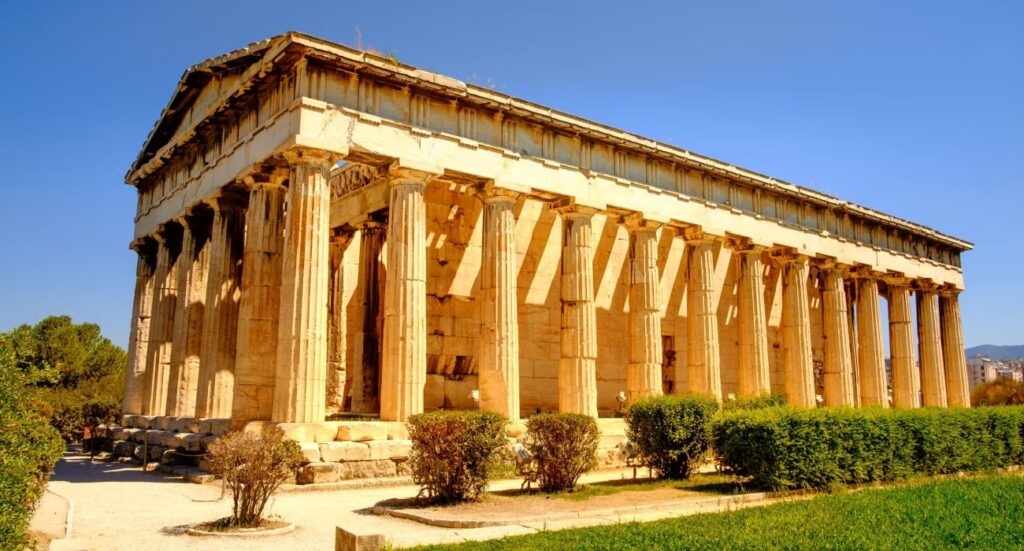



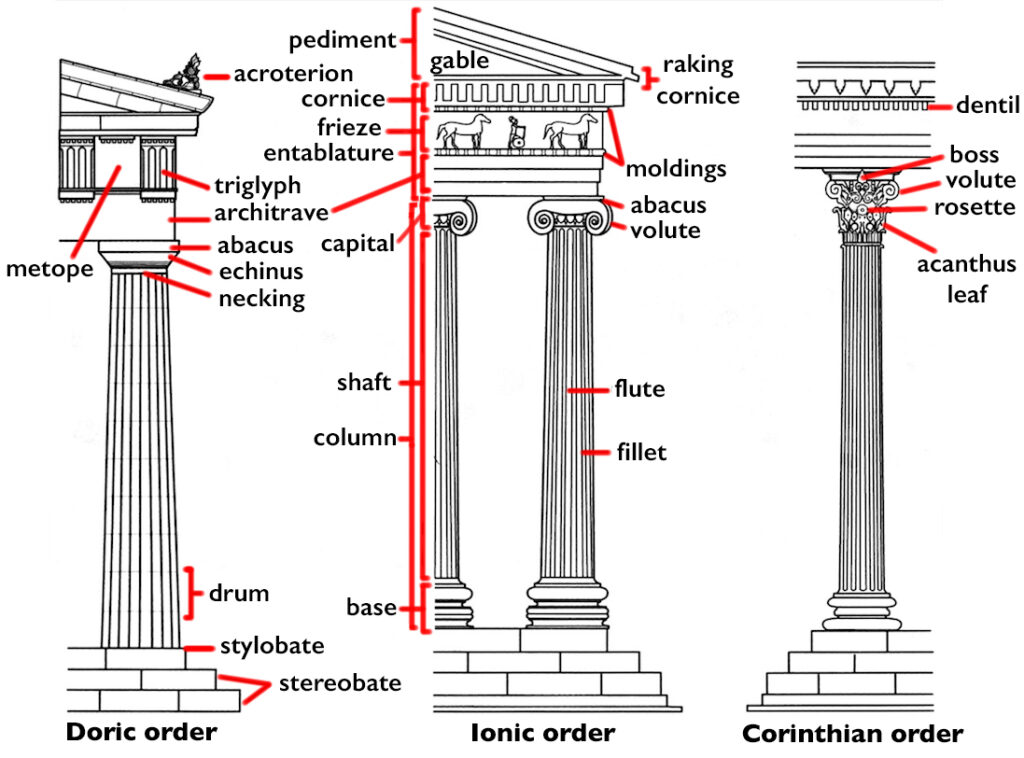
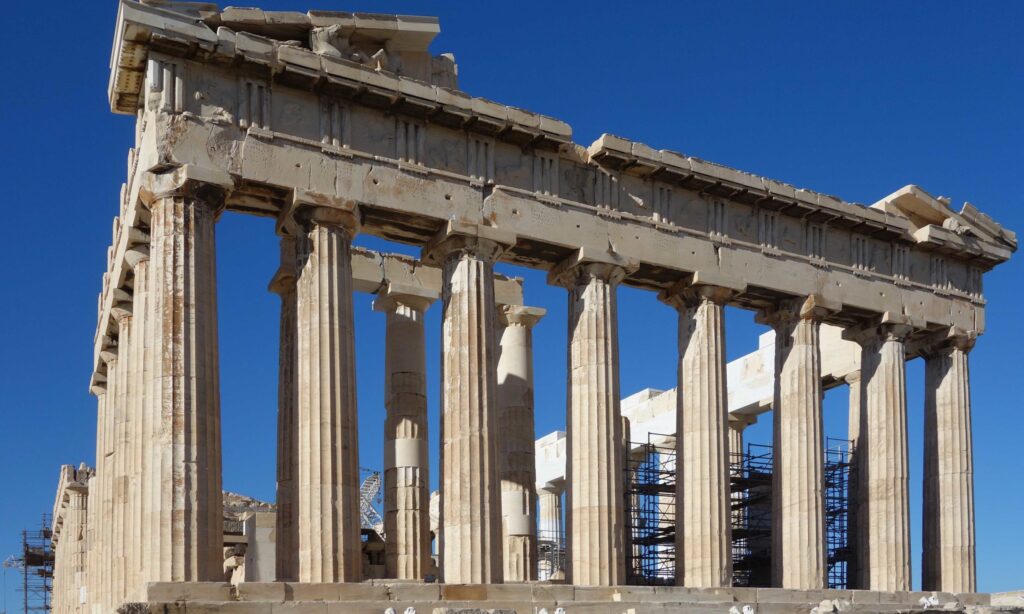




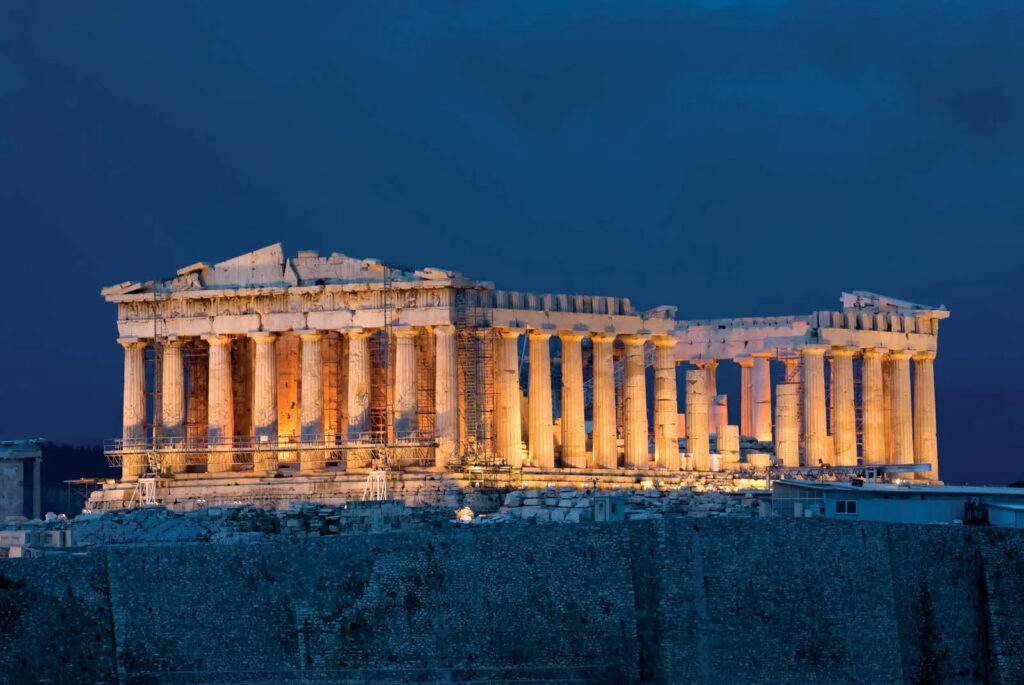
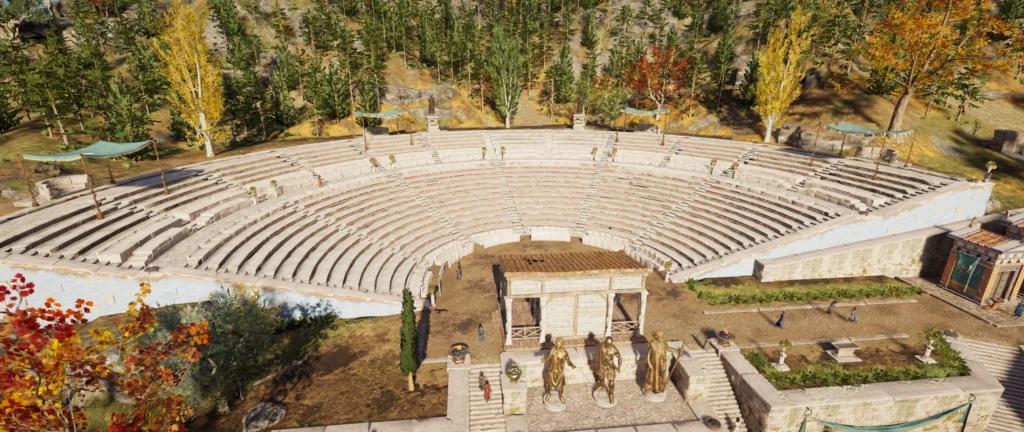
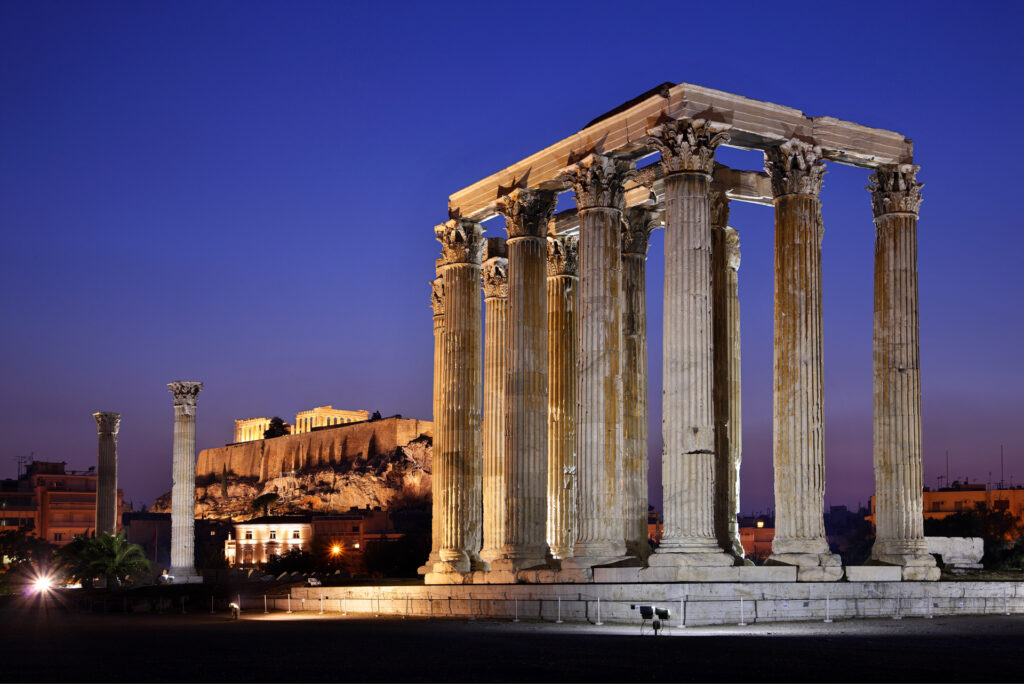
One response
I have been browsing online more than three hours nowadays, yet I never discovered any attention-grabbing article like yours. It is beautiful value sufficient for me. Personally, if all webmasters and bloggers made just right content material as you probably did, the net might be a lot more helpful than ever before. “I think that maybe if women and children were in charge we would get somewhere.” by James Grover Thurber.